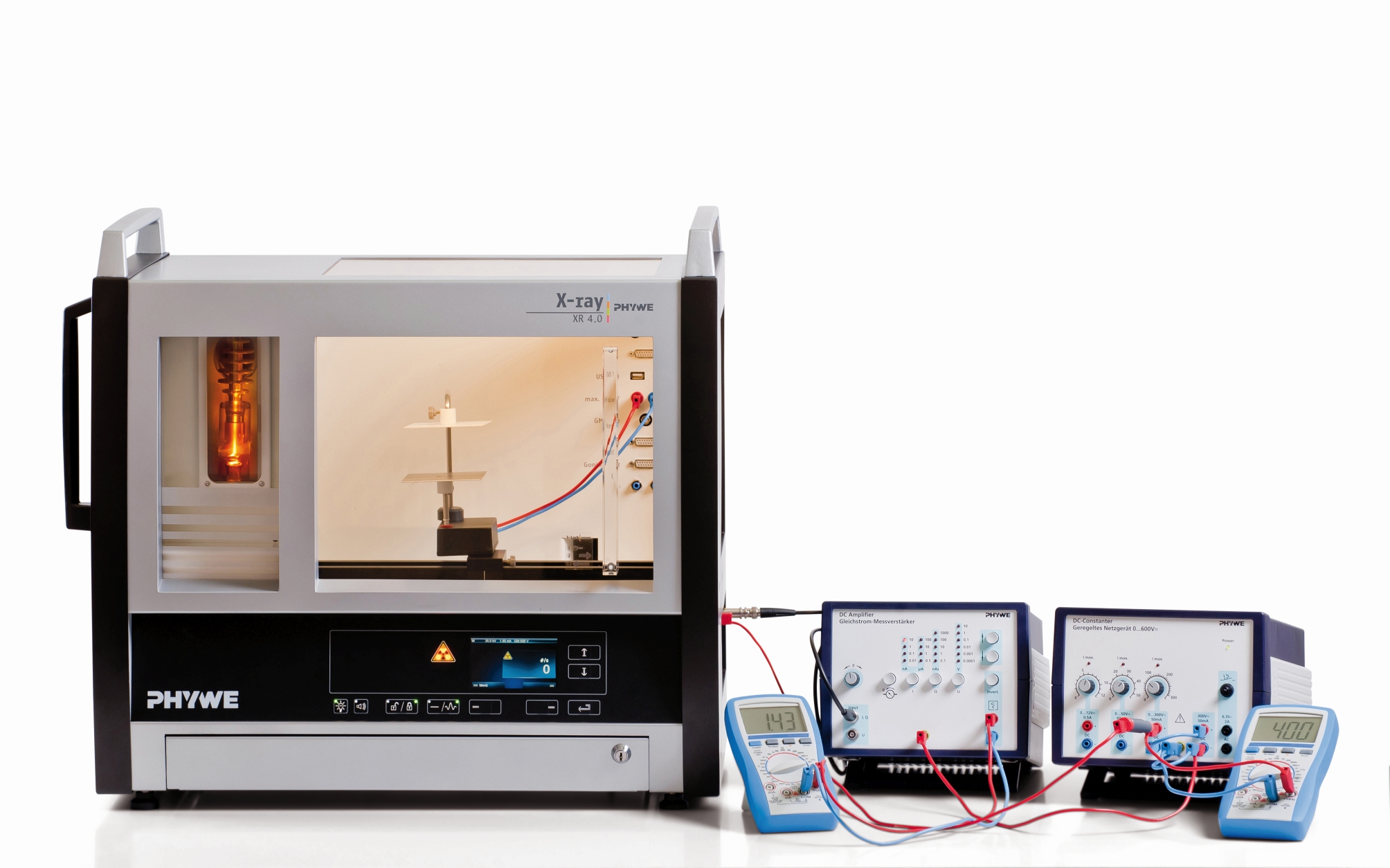Principle
Dosimetry, as a subspecialty of medical physics, deals with the determination and calculation of dose rates, which is also of great importance in view of the radiation protection directives. This experiment demonstrates the principle of measurement and it explains the various units of absorbed dose, equivalent dose, and absorbed dose rate. Inside a plate capacitor, an air volume is irradiated with X-rays. The resulting ion current is used to determine the dosimetric data.
Benefits
- Experience the essence of the Nobel Prizes: Röntgen (1901), W.H. Bragg, W.L. Bragg, (1914)
- X-ray unit with newest technology to fulfill German safety regulations for student experiments
- Large unbreakable lead enforced acrylic glass windows according to DIN safety regulations
-
This experiment can alternatively also be performed with a copper, molybdenum or iron X-ray tube
Tasks
- Using the two different diaphragm tubes and the fluorescent screen, the given distance between the aperture and the radiation source at maximum anode voltage and current is to be determined.
- The ion current at maximum anode voltage is to be measured and graphically recorded as a function of the capacitor voltage by using two different beam limiting apertures. The ion dose rate and the energy dose rate are to be determined from the saturation current values.
- Using the d = 5 mm aperture, the ion current is to be determined and graphically recorded at various anode currents but with maximum anode and capacitor voltages.
- The ion current is to be measured and graphically recorded as a function of the capacitor voltage at different anode voltages and the corresponding saturation currents plotted graphically.
Learning objectives
- X-rays
- Absorption inverse square law
- Ionizing energy
- Energy dose
- Equivalent dose and ion dose and their rates
- Q factor
- Local ion dose rate
- Dosimeter

